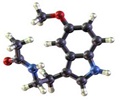Sleep apnea sufferers tired of spending sleepless night would soon get relief, courtesy Zzoma, a new device developed by scientists from Temple University School.
People suffering from positional sleep apnea often struggle for breath in bouts throughout the night.Positional sleep apnea refers to patients who have episodes where they stop breathing when they're on their back, but when they are on their side, the abnormal breathing resolves.
About fifty percent of patients with mild sleep apnea, those who experience anywhere from five to 15 events an hour and 20 percent of people with moderate sleep apnea, with 15 to 30 events an hour have positional sleep apnea.
"They don't make the connection between the fact that they snore loudly at night and they complain about being tired during the day," says Samuel Krachman, D.O. , professor of medicine and director of the Sleep Disorders Center at Temple University School of Medicine and Hospital.
"They think that they're just tired, not getting enough sleep or just working too hard. But in reality, it's related to the sleep apnea," he added.
Krachman explains how wearing the device, called Zzoma, works to reduce those episodes. The device was created by former Temple Fellow Joseph G. Crocetti.
Advertisement
"Over the last year, we've been studying its use in treating patients with mild to moderate positional sleep apnea," he added.
Advertisement
"Although CPAP is very effective, the best studies have shown it's only used correctly 50 percent of the time," says Krachman. "That leaves many diagnosed with sleep apnea but not treated."
Source-ANI
SRM














